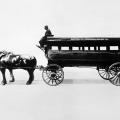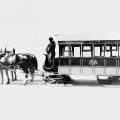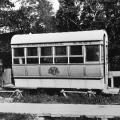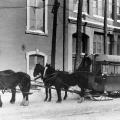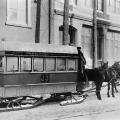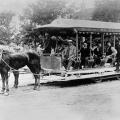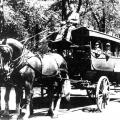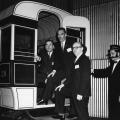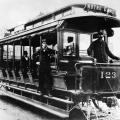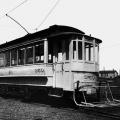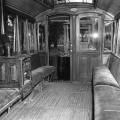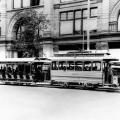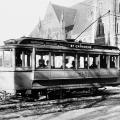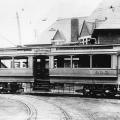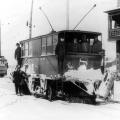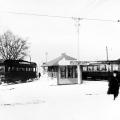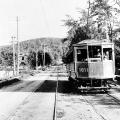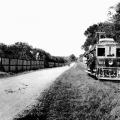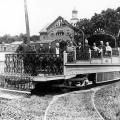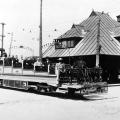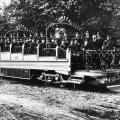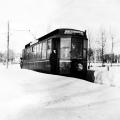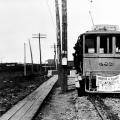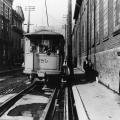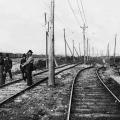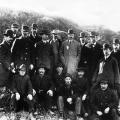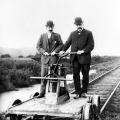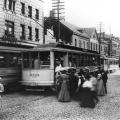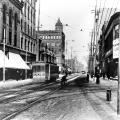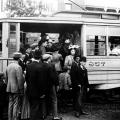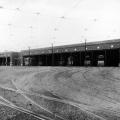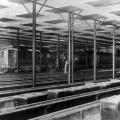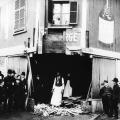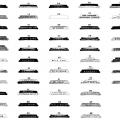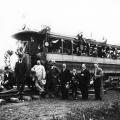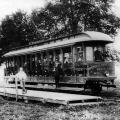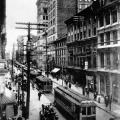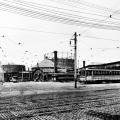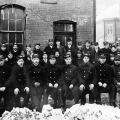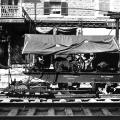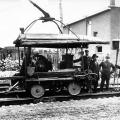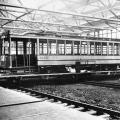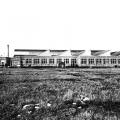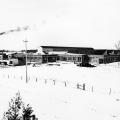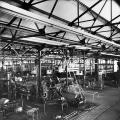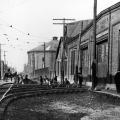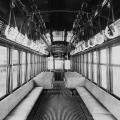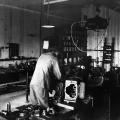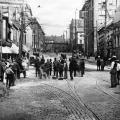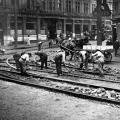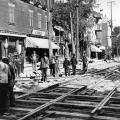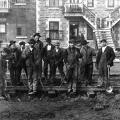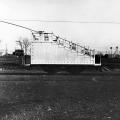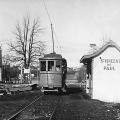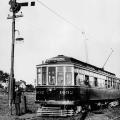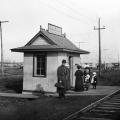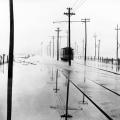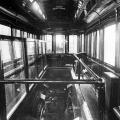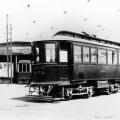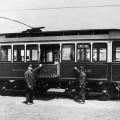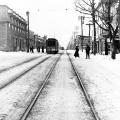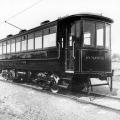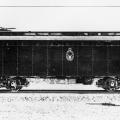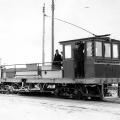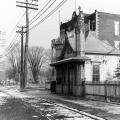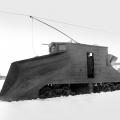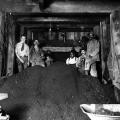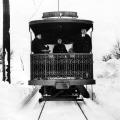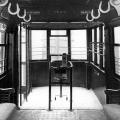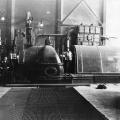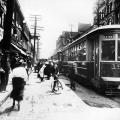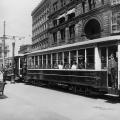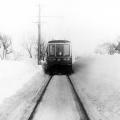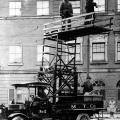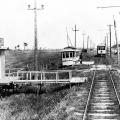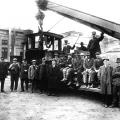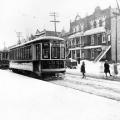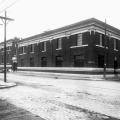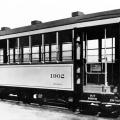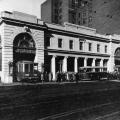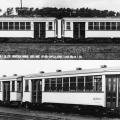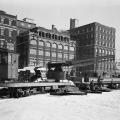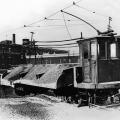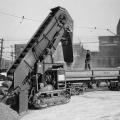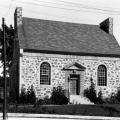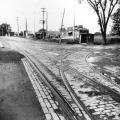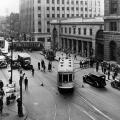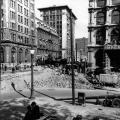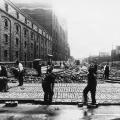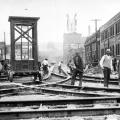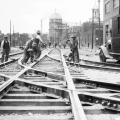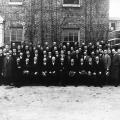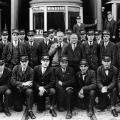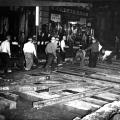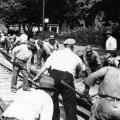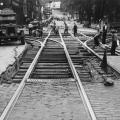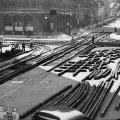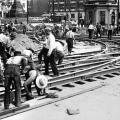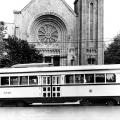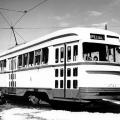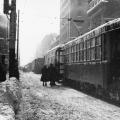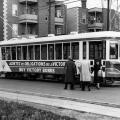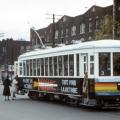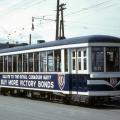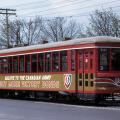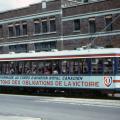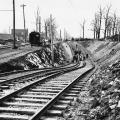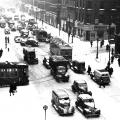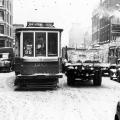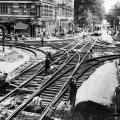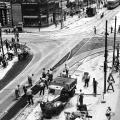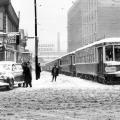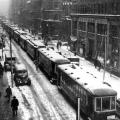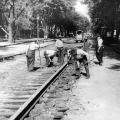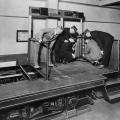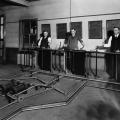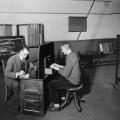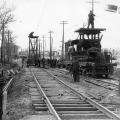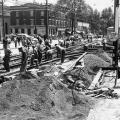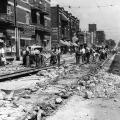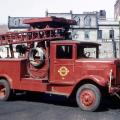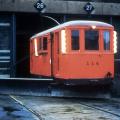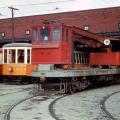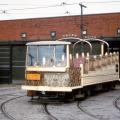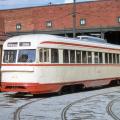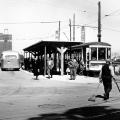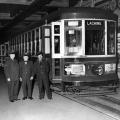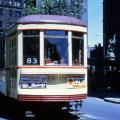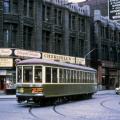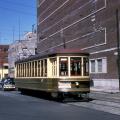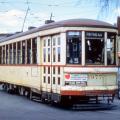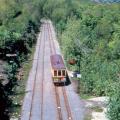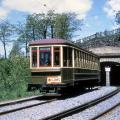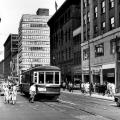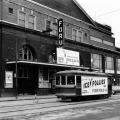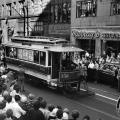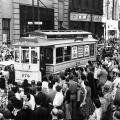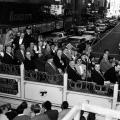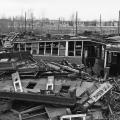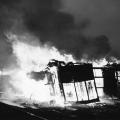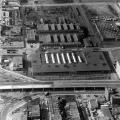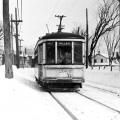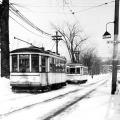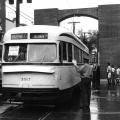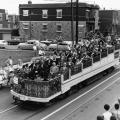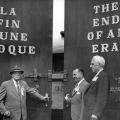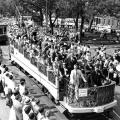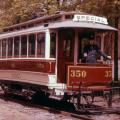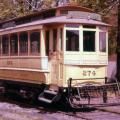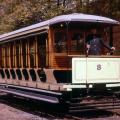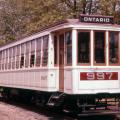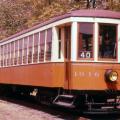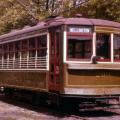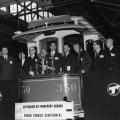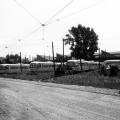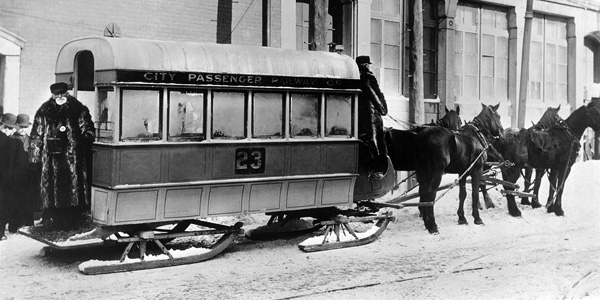
Horse-drawn winter tramway on St. Catherine Street (around 1877)
The first tramways, which were drawn by horses along rails installed in the public roads, appeared in England in 1807. In Montreal, the harsh winters and steep inclines delayed the introduction of this type of network. It was only in 1861 that the city’s first public transportation company, the Montreal City Passenger Railway Company (MCPRC), was created. The MCPRC hired an American, Alexander Easton, to build its six mile (10 km) network. Construction began on September 18, 1861 and a first line was put into service along today’s Notre-Dame Street on November 27. A second line was inaugurated a few days later on Saint-Antoine Street.
Each horse-drawn tramway had two employees: the driver and the conductor, who sold the tickets and collected the five-cent fare. Workers, who earned less than a dollar per day at the time, couldn’t yet afford this service reserved for a certain elite group. People simply hailed the tramway to have it stop and pick them up, and they could even ask the driver to wait a few minutes for them! In its first year, the company logged a million trips. Three types of cars were used: the summer tramway, which had open sides, the winter or sled tramway, which was very useful when the rails were covered with snow and ice, and the omnibus, a wheeled vehicle used when the rails were impassable, such as during the spring melt.
Click on these STM Archives pictures to enlarge them.
The first electric tramways appeared in Europe in the early 1880s. In Montreal, the electrification of the network was delayed because the management of the Montreal Street Railway Company (MSRC)—which had replaced the MCPRC in 1886 and had close to 1,000 horses—had misgivings. However, the work finally began in the summer of 1892 and the city’s very first electric tramway, the Rocket, was put into service on September 21, 1892. Within two years, the network was completely electrified, and ridership doubled during that same period from 10 million trips to 20 million. Meanwhile, a system of transfer tickets was tested to facilitate changing from one express line to another.
The electric tramways were much faster than horses and were soon serving Sault-au-Récollet (1893), the parish of Saint-Laurent (1895), Bout-de-l’Île (1896) and Lachine (1897). At the same time, the MSRC introduced double-truck tramways, which were longer and more spacious. Most importantly, the company inaugurated the Pay As You Enter (PAYE) tramway, the first public transit vehicle in the world in which passengers paid when they boarded instead of waiting for an agent to collect the fare. That same year, the MSRC also introduced its famous observation tramway, which would delight generations of Montrealers, young and old alike. Ridership reached 50 million in 1905 and hit the magic 100-million mark in 1910.
Click on these STM Archives pictures to enlarge them.
Created in 1911, the Montreal Tramways Company (MTC) quickly acquired all of the other transit companies on the Island of Montreal. This private monopoly caused some concern for the general public, who were worried about the quality of the service offered. Late that year, the new company opened its first repair shops in Youville, where the metro’s primary maintenance shops are currently located. A few years passed before the creation, in 1918, of the Montreal Tramways Commission, a public organization tasked with supervising the activities of the Montreal Tramways Company. This new balance worked quite well and the tramways were on the cusp of their golden age in Montreal.
At its peak in the early 1920s, the Montreal tramway network comprised over 300 miles (500 km) of tracks and more than 900 vehicles carried nearly 230 million passengers per year. In 1924, the first network map was distributed and the tramway cars began indicating the route number. That same year, the first solotrams (tramways operated by one employee) appeared and passengers now had to board at the front of the vehicle. In 1925, a huge terminus was opened on Craig Street, today’s Saint-Antoine West. In 1929, the MTC moved its offices just next door and, the following year, the company launched its Mount Royal tramway line.
Click on these STM Archives pictures to enlarge them.
After dominating the city’s landscape for years, tramways now faced competition from buses, which were introduced in Montreal in 1919 and had their own division as of 1925. The early rickety buses were quickly replaced by quality vehicles which, although they could not carry as many passengers as the tramways, could be deployed rapidly and less expensively as the city evolved. After several smaller-scale tests, the first major replacement of a tramway by a bus occurred in 1936 in the city’s east end, on Notre-Dame Street. The bus was no longer a simple complement to the tramway but its direct competitor.
World War II breathed new life into the tramways. The Transit Controller appointed by the federal government in 1941 required the MTC to limit its use of gasoline and tires. The company was thus forced to return its old tramways to service and purchase a few more second-hand. In 1944, it also put into service the PCC tramways, the last tramway model used in Montreal, of which it received only 18. So it was an aging fleet of tramways that served Montreal through the Second World War and made it possible to achieve a peak ridership in 1947 of 398,349,773 passengers transported during the year.
Click on these STM Archives pictures to enlarge them.
Faced with the criticism of the MTC’s private monopoly, the City of Montreal created the Montreal Transportation Commission (MTC) in August 1950. The Commission appropriated the assets of the Montreal Tramways Company on June 16, 1951, including a large number of old tramways at the end of their useful life. The tramways needed to be replaced quickly, but with what type of vehicle? Although powered by electricity, tramways were no longer very popular in the early 1950s. They were not as flexible as buses and many motorists accused them of blocking downtown traffic. So the decision was made to replace them all with buses over a period of some ten years.
In the end, it took eight years to retire the tramways, with the CTM purchasing some 1,300 buses to replace its 939 tramway cars. And that was how “the trams” gradually disappeared from the city’s streets, such as Sainte-Catherine Street, where a parade was organized in 1956 for the event. On August 30, 1959, another parade marked the retirement of the last tramways in Montreal, on Papineau Avenue and Rosemont Boulevard. It was the end of an era—nearly 100 years of tramways in Montreal.
Click on these STM Archives pictures to enlarge them.
